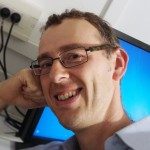Link to Pubmed [PMID] – 31945244
Cell. Microbiol. 2020 Jan;:e13162
Flagella are sophisticated organelles found in many eukaryotic microbes where they perform functions related to motility, signal detection or cell morphogenesis. In many cases, several flagella are present per cell and these can have a different composition, length, age or function, raising the question of how this is managed. When the flagella are equivalent and constructed simultaneously such as in Chlamydomonas or Naegleria, we propose an equal access model where molecular components have free access to each organelle. By contrast, Trypanosoma and Leishmania contain temporally distinct organelles and elongate a new flagellum while maintaining the existing one. The equal access model could function providing that the mature flagellum is “locked” so that it can no longer be elongated or shortened. Alternatively, access of flagellar components could be restricted at the level of the basal body, the transition zone or the loading on intraflagellar transport trains. In organisms that contains flagella of different age and composition such as Giardia, a temporal dimension is necessary, with the production of protein components of flagella spreading over one or more cell cycles. In the future, deciphering the molecular mechanisms involved in these processes should reveal new insights in flagellum assembly and function. This article is protected by copyright. All rights reserved.



